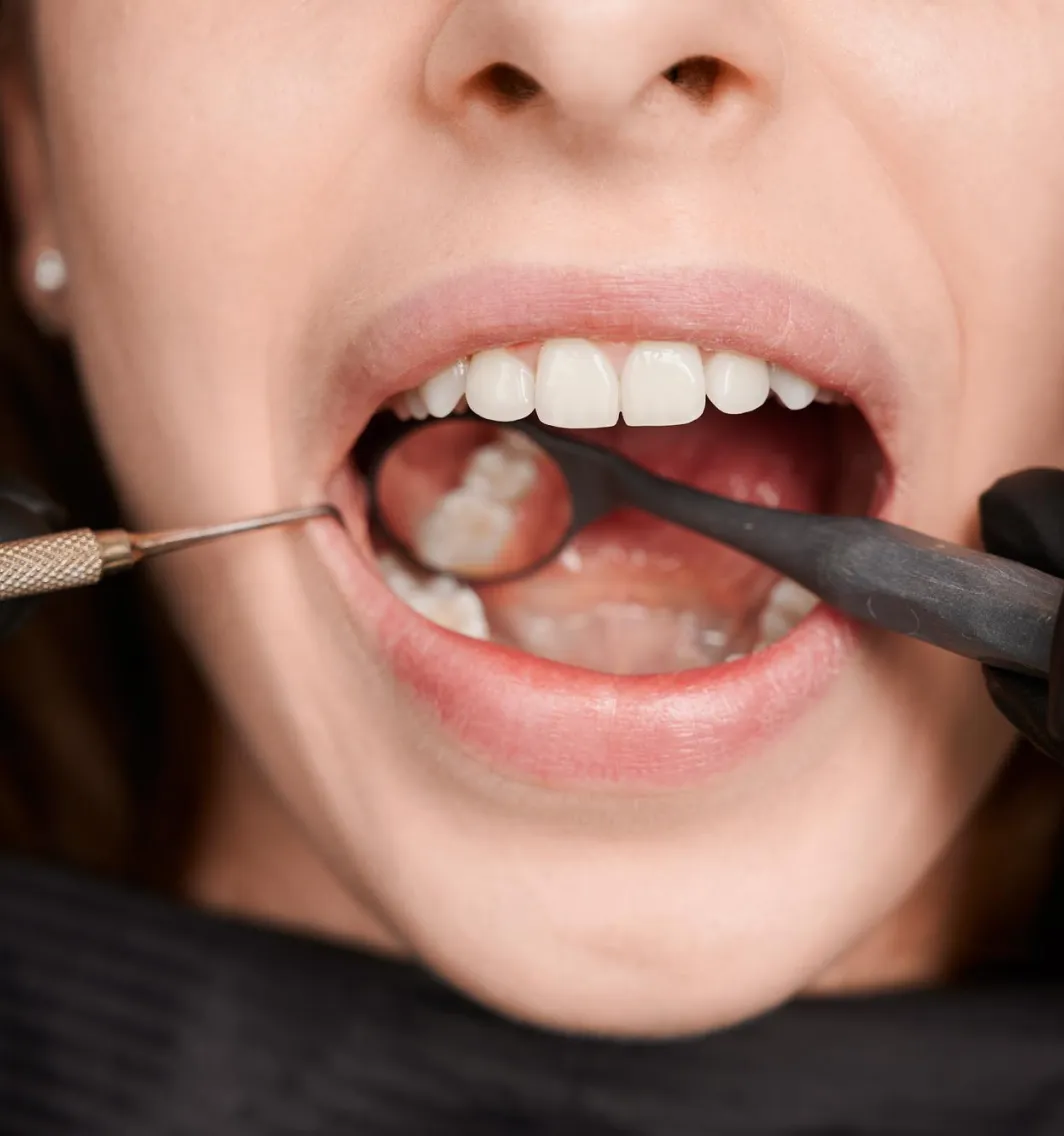Why Do Gum Treatment
Gum disease or Periodontal disease is a leading cause of tooth loss among adults. Periodontal disease affects teeth by weakening the jawbone and gum tissue that supports a tooth root.
The common signs of gum problems include swollen, bleeding, tender or receding gums and loose teeth. The root cause of gum disease is dental plaque that contains bacteria and forms tartar deposits as it hardens.
Teeth are supported by the socket bone that surrounds tooth roots, and attached to the socket by periodontal connective tissue. When healthy, gums appear a smooth pale, pink, feel firm and fill the space between teeth completely. The gums form a tight cuff around the neck of a tooth, just like a collar.
It’s this area of the gum crevice where gum disease is initiated. As bacteria collect in the gum crevice, they produce a sticky, colorless film known as plaque. Dental plaque contains harmful bacterial toxins that cause the gum tissue to become inflamed and produce gum diseases.


Types of Gum Diseases
Broadly, gum diseases have two stages:
Gingivitis:
Gingivitis is the first stage of gum disease, when the gums become inflamed making them puffy or bleeding. At this stage, the bone and connective tissue supporting the roots are intact and not damaged. Gingivitis is completely treatable by removal of dental plaque and tartar.
Periodontitis:
This is a more advanced stage of disease, where the gum detaches from the root forming ‘periodontal pockets’. The bone support and connective tissue ligament that attaches the root to the socket are reduced and damaged. Depending on the extent of support that’s lost, periodontitis can vary in severity. Periodontits affects about a half of all adults with about ten to fifteen percent having severe periodontal disease.
Screening for Gum Disease
Gum disease tends to be ‘silent’ and painless in the beginning. Some warning signs that you may be affected with gum disease:
- If you’ve ever noticed bleeding gums, may be occasionally.
- If you frequently find foul taste or discharge in your mouth
- If you notice bad breath
- If you find food getting ‘stuck’ in some areas of the mouth
- If your gums are swollen or receding
- If you get an itching sensation or irritation in the gums
- If you have discomfort on chewing
- If you find your teeth to be ‘sensitive’ to hot or cold food
- If your teeth feel loose
- If you have high risk for gum disease; like diabetes, osteoporosis or certain medications.


Treatment and Prognosis
It’s important to take care of your gums by regular oral hygiene; brushing and flossing. Regular dental visits for maintenance dental cleanings can prevent gum disease, largely. If you’ve noticed any warning signs, you need to undergo a complete periodontal exam, where the status of gums around each tooth is recorded in detail. For those with gingivitis, a hygiene appointment to clean dental tartar is usually all that’s needed.
For more severe periodontal disease, timely management is more crucial to prevent its progression. Basic treatment includes various non-surgical periodontal therapies such as root-planing and local medication to heal periodontal pockets. We also provide advanced periodontal treatment like gum surgeries, which may be needed in higher severity cases.
We closely monitor the healing status in the months following the initial periodontal therapy to determine if you need periodontal specialist procedures. Long-term care is also very important to successful periodontal treatment. That’s why we design customized maintenance schedules for all our periodontal patients, based on their individual needs and risks.